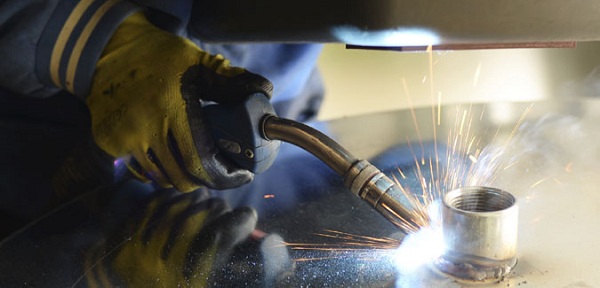Stainless steel is a very strong material, but it is also flexible enough so that we can bend, fold, machine, weld, deep draw and spin it. It is also a very versatile material that is used for many different things, which means there are also many different stainless steel fabrication techniques. To help better understand all these different processes we’re going to go over a few different ones so you can know the benefits and downfalls of each complete stainless steel fabrication, which include welding, machining, and work hardening.

The first stainless steel fabrication techniques we should go over is welding. Now, most of us know what welding is, but for those of you who do not, welding is the process or joining materials (usually metals) by using fusion. Each grade of stainless steel does, however, weld differently from each other.
Austenitic metal is mostly good for welding except for grade 303, but in saying this, this group of steel is known for its sensitization and inter-granular corrosion when used in thicker products. For anything that is thick, you should consider a different group with a low carbon content. Martensitic is another grade of metal that is a good option for someone who wants to weld. This group does require heating before and after to reduce the risk of cracking.
Ferritic stainless steel is not the best choice for welding but is still usable for some things; it does have problems when it comes to sensitization, low ductility, and high grain growth. Duplex is efficient for welding and works great for low thermal expansion. Some grades of this stainless steel have a higher nickel content which means it is superior when it comes to ductility, corrosion, resistance, and strength.
Machining stainless steel usually has one main problem and that is chipping. Luckily there are grades that have resistance against chipping such as grades 303, 430, 410, and 416 because they have been alloyed with manganese sulfide. Even so, these grades still have limited use when it comes to stainless steel sheet metal fabrication and machining stainless steel. Some companies have tried to find ways to make this process easier by including steel melting techniques to their machinery to ease welding and machining commonly used grades. Thanks to these recent changes, efficiency has gone up and tool life has become longer.
Chipping is a major deal breaker when it comes to machining stainless steel. There are a few steps you can take to make this process easier which include applying lubricants to the equipment, making sure the cutting edge is sharp, selecting machinery with less vibration, maintaining light cuts and feeds, and using chip breakers to deflect any debris that might come off.
Work hardening is the final process to go over and it involves the process of strengthening the steel through deformation. Steel can harden at different rates but most of the time stainless steel tends to harden quite quickly (this can also vary from grade to grade). Depending on what you use it for, you should know that the ausentitic family of steel has a hardening rate higher than that of carbon steel and that is why it is used in most complete stainless steel fabrication processes.
There are certain benefits you can gain from this process which include better strength and resistance against corrosion. You can mostly see this is the making of nuts, bolts, tools, valve parts, bearing, and cutlery. Hopefully, this guide on the stainless steel fabrication process has brought you some clarity and knowledge as to what the differences, benefits, and downfalls are between each process.
























